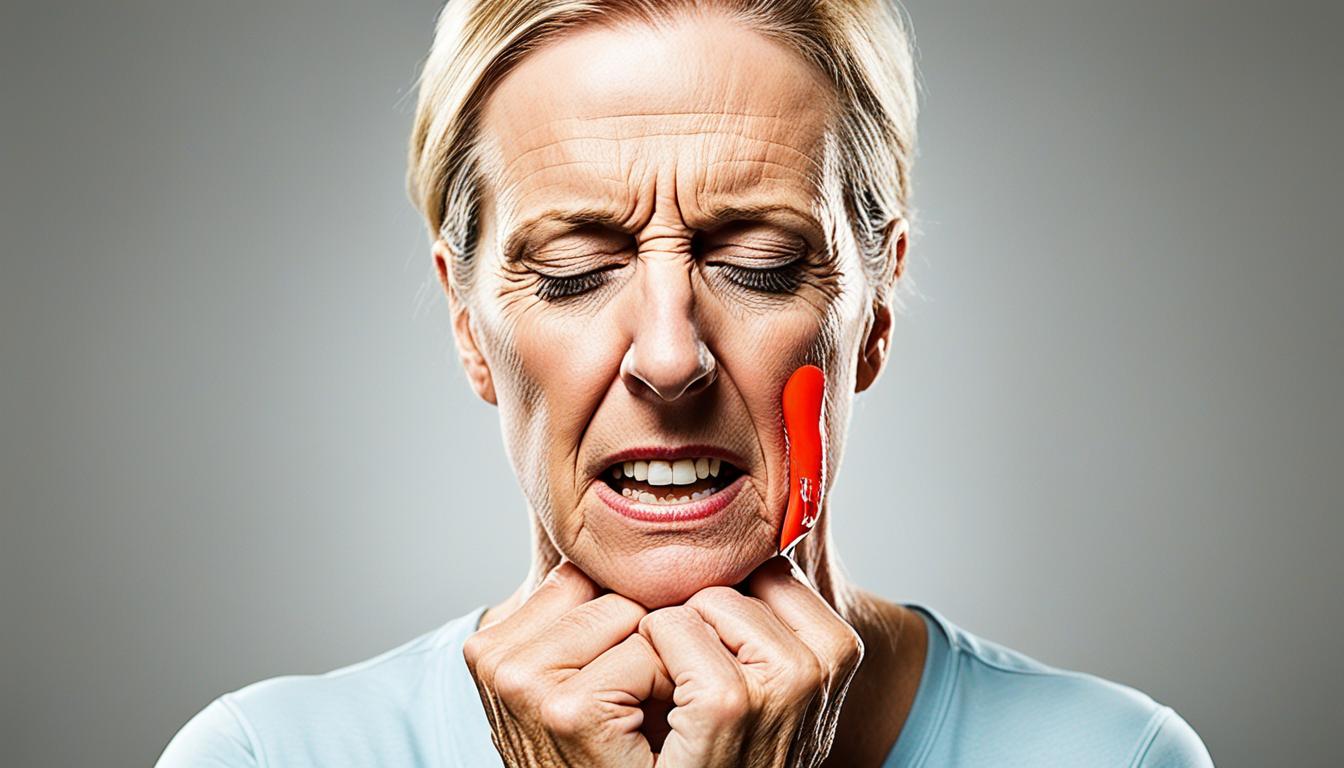Tetanus is a severe disease caused by the bacteria Clostridium tetani. Its toxins cause muscle spasms and lockjaw. Those unvaccinated or with fading immunity are at a higher risk, including the elderly. Global vaccination efforts have significantly cut tetanus cases.
There are four types of tetanus: generalized, neonatal, localized, and cerebral. It enters the body through wounds, cuts, or contaminated objects. Spores live in soil, dust, and animal waste. So, it’s vital to be careful in these places.
In babies, tetanus can come from cutting the umbilical cord in unsanitary conditions. The sickness is most deadly where medical care is scarce.
It’s key to know how tetanus starts, spreads, and its effects. Stem cell treatment is new but promising for those with tetanus.
Key Takeaways:
- Tetanus is an infectious disease caused by Clostridium tetani bacteria.
- Vaccinating people has greatly cut down on tetanus worldwide.
- The four main types of tetanus are generalized, neonatal, localized, and cerebral.
- To avoid it, be careful in areas where tetanus spores might be.
- Stem cell treatment is hopeful for Tetanus patients.
Symptoms and Diagnosis of Tetanus
Tetanus is caused by the bacteria Clostridium tetani. It has distinct symptoms. The main one is muscle rigidity with painful spasms. Those with tetanus may first feel irritable. They might experience muscle cramps, soreness, and weakness. They can also find it tough to swallow. Lockjaw is an early and classic sign of the disease. This causes the jaw muscles to spasm, making it hard to open the mouth.
Another unique sign is a forced smile, called risus sardonicus. This happens when the face muscles stay contracted. As tetanus moves on, muscle spasms spread throughout the body. This can cause the back to arch, known as opisthotonus. Also, there can be reflex spasms from outside triggers.
Doctors diagnose tetanus by looking at the symptoms and the patient’s history. They check for exposure to tetanus spores or wounds. Still, there isn’t a specific test just for tetanus.
In short, tetanus shows symptoms like muscle stiffness and spasms. It starts with irritability, cramps, and difficulty swallowing. Lockjaw is a key early sign. Also, a person might show a forced smile. As it gets worse, muscle spasms can make the back arch. And the body might react with spasms to outside touch or sounds.
| Symptom | Description |
|---|---|
| Lockjaw (Trismus) | Spasms of the jaw muscles causing a rigid, locked position |
| Risus Sardonicus | Rigid smile due to sustained contraction of the facial musculature |
| Muscle Spasms | Painful contractions affecting various muscles, progressing to the entire body |
| Opisthotonus | Arching of the back due to muscular spasms |
| Reflex Spasms | Spasms triggered by external stimuli |
Causes and Prevention of Tetanus
Tetanus is a serious infection caused by Clostridium tetani bacteria. These bacteria are found in soil, dust, and animal waste. They enter the body through cuts, punctures, and breaks in the skin. Contaminated needles or insect bites can also spread tetanus.
Not getting vaccinated is a big risk for tetanus. If you miss your shots, you’re more likely to get it. Tetanus spores can stick around for a long time and infect wounds. This is especially true for wounds that have dirt or foreign objects in them.
Vaccines are key in preventing tetanus. Tetanus shots are a common part of childhood vaccines. Adults need booster shots about every 10 years to stay protected.
Cleaning wounds well is also crucial for tetanus prevention. Take out any foreign items and make sure the wound heals right. Sometimes, if a wound is risky or an immunization is missing, extra tetanus shots are needed.
Preventing tetanus is possible with vaccines and proper wound care. Lessening the number of cases is a big way to protect people from this dangerous disease.
Stem Cell Therapy and Future Directions for Tetanus Treatment
Stem cell therapy is very promising in regenerative medicine for tetanus. Stem cells can change into different cell types, like muscle cells. This is why they can help with muscle recovery in tetanus patients.
Researchers are working to use stem cells to boost muscle function and lower tetanus effects in the long run. By making stem cell treatments better, we hope to see improved results for tetanus patients.
But, there’s still a lot to learn about how stem cell therapy can really help with tetanus. Future studies aim to make this therapy work even better, be safe for patients, and check its long-term effects.
The next steps in treating tetanus hinge on new discoveries in stem cell research. This might involve using stem cells that are genetically tweaked and methods from tissue engineering. These new methods could lead to better muscle recovery and completely change how tetanus is treated.

